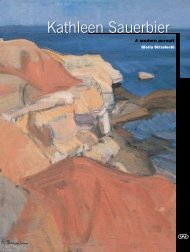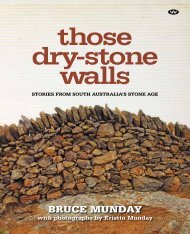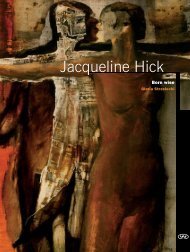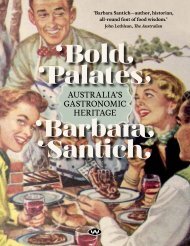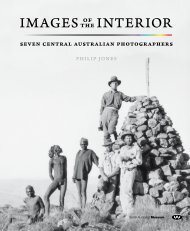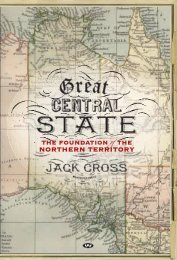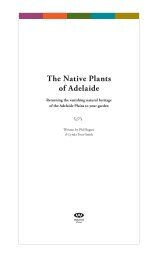ROBERT FOSTER AND AMANDA NETTELBECK - Wakefield Press
ROBERT FOSTER AND AMANDA NETTELBECK - Wakefield Press
ROBERT FOSTER AND AMANDA NETTELBECK - Wakefield Press
Create successful ePaper yourself
Turn your PDF publications into a flip-book with our unique Google optimized e-Paper software.
Introduction5Western Australia might suggest a different pattern in so far as, likeSouth Australia, it promised Aboriginal protection under the law not justas a vacillating ‘afterthought’ 23 but as a foundational principle. WhenLieutenant-Governor Stirling proclaimed Western Australia as a Britishcolony in June 1829, he stated (though without quite the definite force ofintention expressed by Governor Hindmarsh in proclaiming South Australiain 1836) that anyone behaving in a ‘fraudulent, cruel or felonious manner’towards Aboriginal people would ‘be liable to be prosecuted and tried for theoffence as if the same had been committed against any other of His Majesty’ssubjects’. 24 Again, however, the historical record suggests that in WesternAustralia ‘both courts and the colonial government [realised] that Aboriginescould not really be treated as British subjects’, and exercised a mixture of‘legal and illegal remedies’ in responding to Aboriginal ‘crime’ well into the1840s. 25 And though technically British subjects, Aboriginal people would bepoliced on Western Australia’s remote northern frontiers with deadly forceuntil the early twentieth century, while in contrast it proved virtually ‘impossible’to investigate settlers for crimes against Aboriginal people. 26Bruce Kercher has noted that South Australia would seem most likelyamongst Australia’s colonies to have an effective rule of law because, unlikeother Australian colonies, a clear judicial system was established there ‘almostfrom the beginning’. 27 As he puts it, legal ‘amateurism’ defined the firstdecades of New South Wales justice, as well as justice in the early MoretonBay settlement under New South Wales’ jurisdiction before Queensland’sseparation in 1859; Port Phillip had no resident judge until 1841 or SupremeCourt until its separation from New South Wales in 1851; and althoughWestern Australia had a civil court from 1832, its judges were ‘flexible aboutthe application of English law’ until a Supreme Court was established in1861. 28 However, although South Australia’s judicial structure may havebeen clearly established from the outset, implementing a rule of law on thefrontiers of settlement proved to be altogether another matter.Given that South Australia was distinctive in its explicit promise toprotect Aboriginal people under the law, the history of how its settlementtook place, and of Aboriginal resistance to it, has remained surprisinglyunder-researched in the historical scholarship of Australia’s frontiers. 29Likewise, although there is some excellent scholarship addressing the relationshipbetween Aboriginal people, police and the law in colonial Australia,there has been surprisingly little sustained analysis of the practical processesby which Aboriginal people were brought under the authority of thecolonial state. 30 This book considers the ways in which these processes



